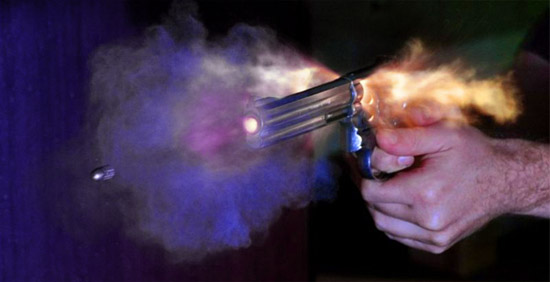
Niels Noordhoek – Ultra-high speed photo of bullet coming out of a S&W revolver photographed with an air-gap flash
Ballistics involves the analysis of bullets and bullet impacts to determine information of use to a court or other part of a legal system. Forensic firearms examiners are trained to examine and analyze weapons, bullets, ballistics and how a bullet has behaved after being fired from a gun. Ballistics investigators often have to :
- analyze firearms, ammunition, and tool mark evidence in order to establish whether a certain firearm or tool was used in the commission of a crime.
- analyze bullets and shell casings found at a crime scene to determine what kind of weapon fired them
- match a particular bullet or shell casing to a specific weapon or linking bullets or casing from multiple crimes scenes back to a single weapon
- reconstruct crime scenes by estimating the distance between the gun muzzle and the person that was shot, and determining the angle or trajectory of the bullets fired
You see guns in movies all the time. Often someone or many someones are shot. But in reality, guns are commonly used by criminals in the commission of a crime. Besides the obvious capacity for murder and assaults, guns are also used to control individuals or groups of people in robberies, rapes, and abductions. FBI reports show that a staggering 67% of murders are committed with a firearm, while knives rank in at a distant second at only 12%.
